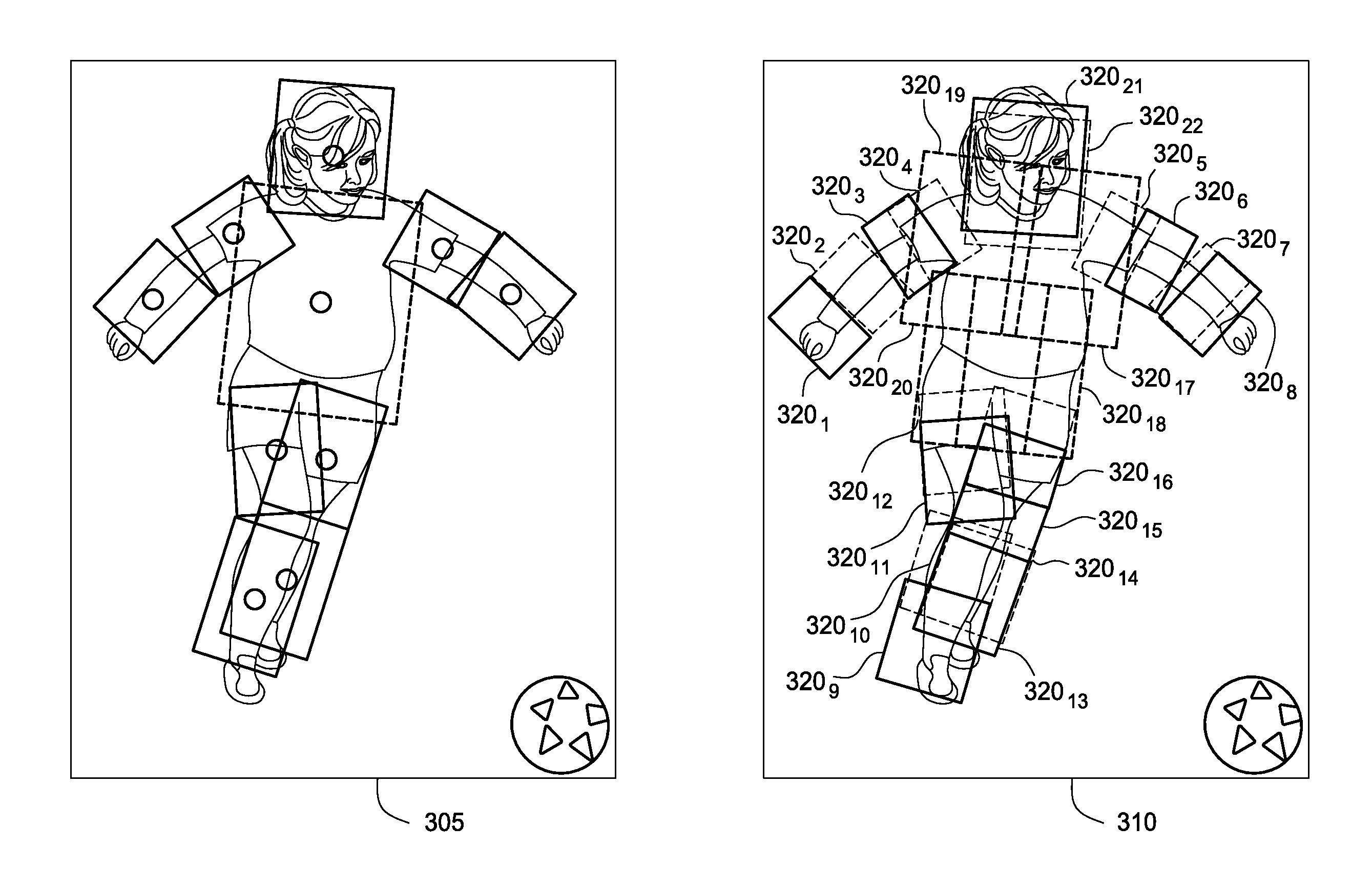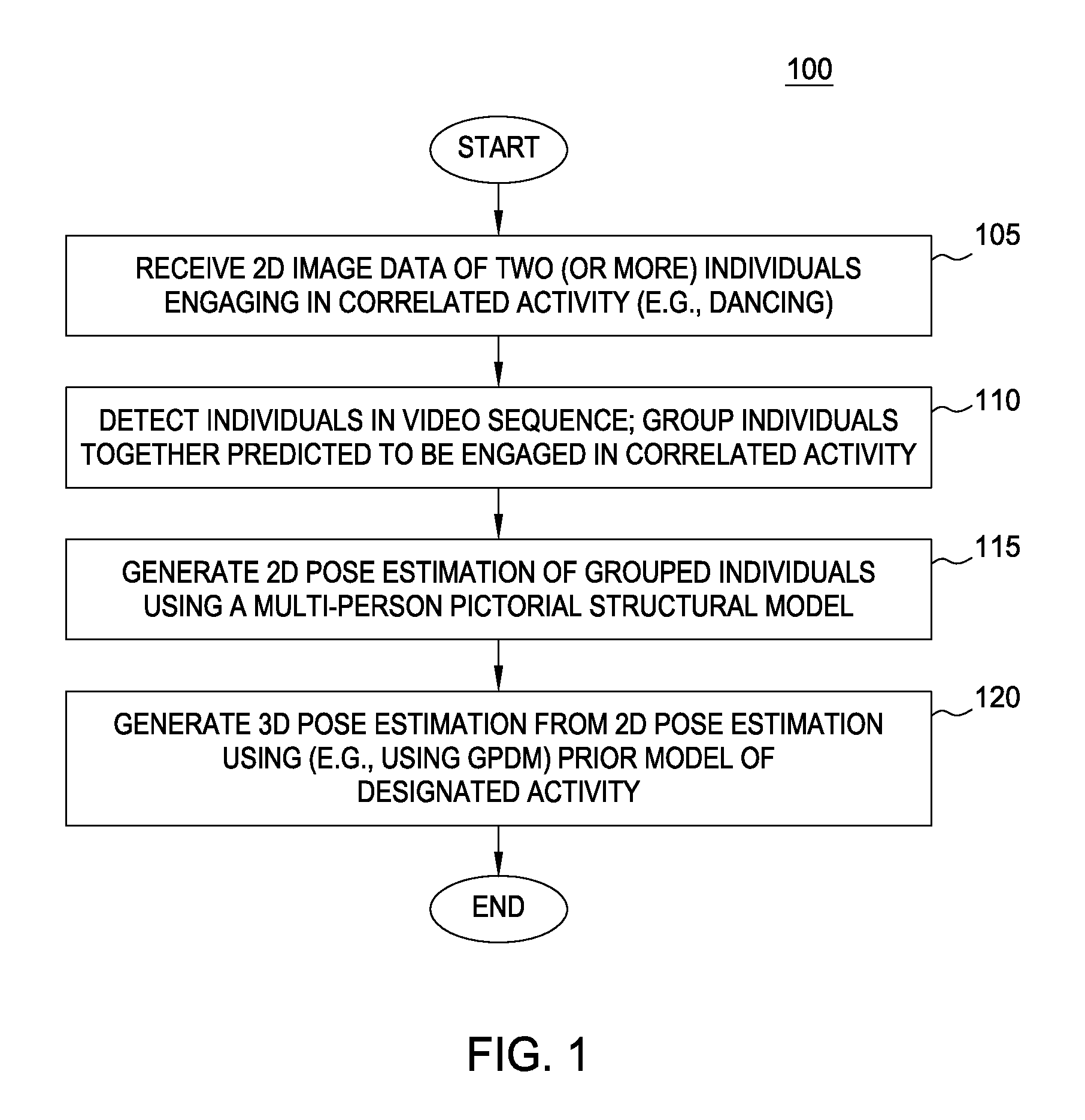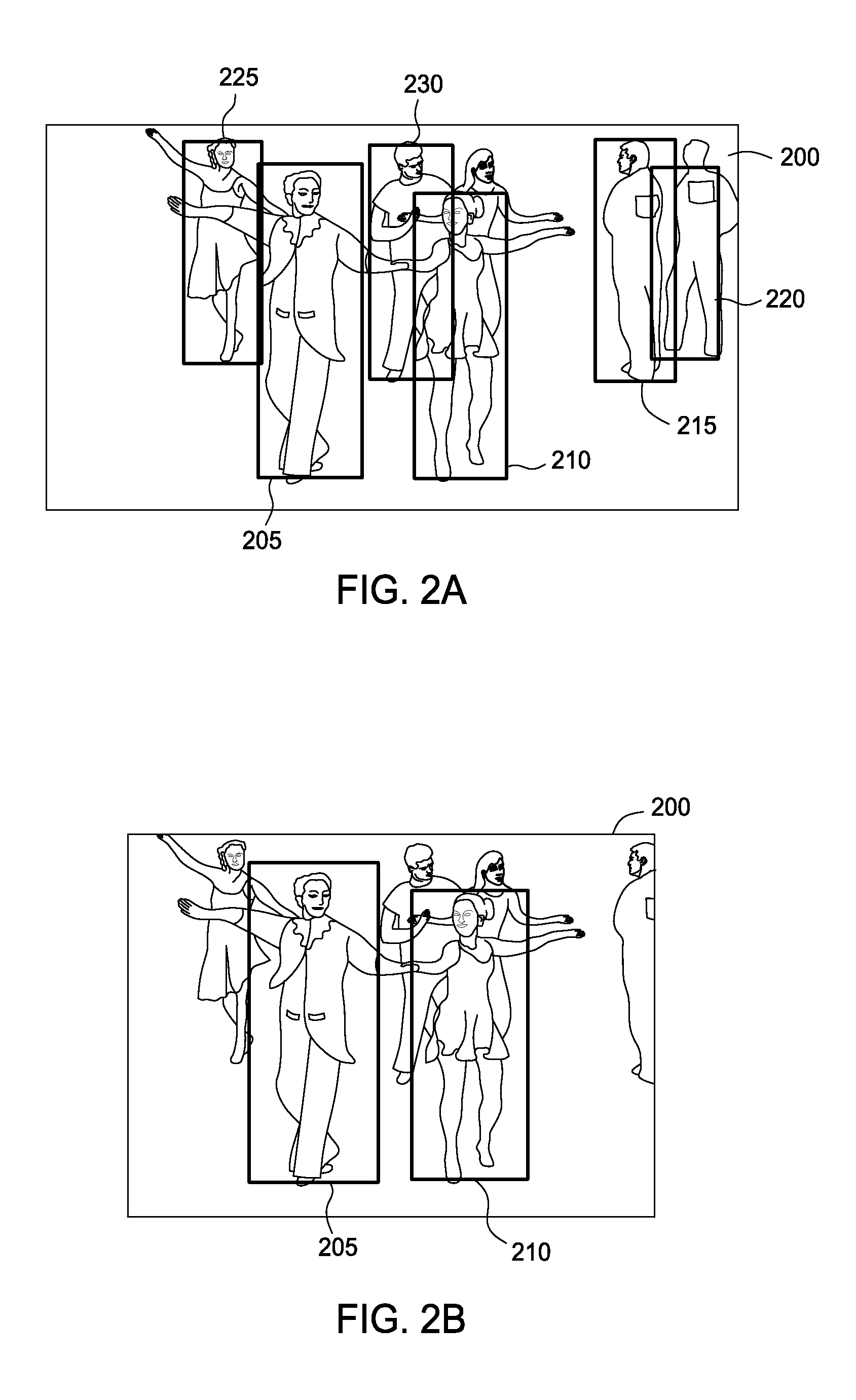Modeling human-human interactions for monocular 3D pose estimation
a human-human interaction and 3d pose technology, applied in image enhancement, image analysis, instruments, etc., can solve the problems of degrading the overall performance of pose estimation tools, challenging tasks, and tracking-by-detection methods generally ignore contextual information provided by the scene, objects, and other peopl
- Summary
- Abstract
- Description
- Claims
- Application Information
AI Technical Summary
Benefits of technology
Problems solved by technology
Method used
Image
Examples
Embodiment Construction
[0015]Embodiments of the invention provide techniques for the automatic recovery of a three dimensional (3D) pose of multiple subjects interacting with one another, as depicted in a sequence of 2D images. As part of recovering 3D pose estimates, the techniques described herein explicitly account for interactions between people in the recorded video. More specifically, individual subjects are treated as mutual “context” for one another. One embodiment provides an automatic framework for estimating 3D pose of interacting people performing complex activities from monocular observations. The framework incorporates and analyzes the role of interactions, in the form of human-human context, at multiple levels of a multilayer process. That is, constraints in pose resulting from individuals engaged in a joint activity (e.g., dancing) is used to guide the recovery of 3D pose estimates from 2D video sequences of individuals engaging in that joint activity.
[0016]In one embodiment, a layered mod...
PUM
 Login to View More
Login to View More Abstract
Description
Claims
Application Information
 Login to View More
Login to View More - R&D
- Intellectual Property
- Life Sciences
- Materials
- Tech Scout
- Unparalleled Data Quality
- Higher Quality Content
- 60% Fewer Hallucinations
Browse by: Latest US Patents, China's latest patents, Technical Efficacy Thesaurus, Application Domain, Technology Topic, Popular Technical Reports.
© 2025 PatSnap. All rights reserved.Legal|Privacy policy|Modern Slavery Act Transparency Statement|Sitemap|About US| Contact US: help@patsnap.com



